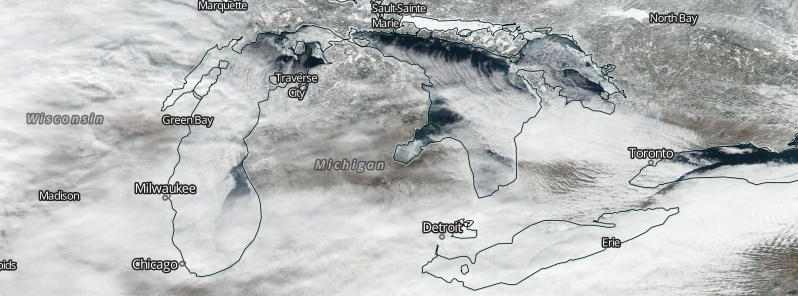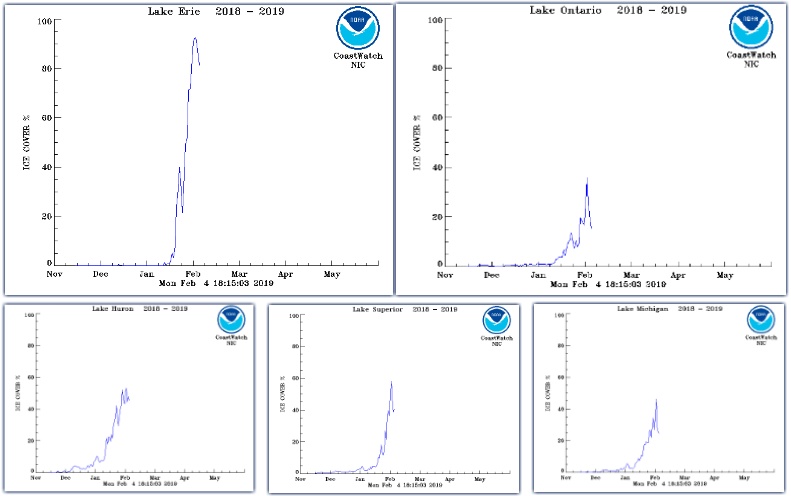Rapid freezing of Great Lakes

A rapid increase of ice coverage was observed on the Great Lakes following well below normal coverage during the first half of January and extremely cold Arctic Air that brought widespread record-breaking temperatures at the end of the month.
After a few days of record #cold, the amount of ice on the Great Lakes has increased significantly, as seen here by #GOESEast. According to the latest update (1/31/2019) from @NOAA_GLERL, total ice cover on the Great Lakes has reached 47.9 percent. More: https://t.co/7UFp9Hp86A pic.twitter.com/6cuZhMobo7
— NOAA Satellites (@NOAASatellites) February 1, 2019
Good afternoon! We continue to triage to get our products back online & models running after the government shut down. #MODIS imagery is now available for download: https://t.co/bksbp9iixc
Hello again you beautiful, icy #GreatLakes!!
Thanks all for your patience pic.twitter.com/ThArUQxnqS— NOAA Great Lakes Environmental Research Laboratory (@NOAA_GLERL) February 1, 2019

Lake Erie had the most pronounced rise in ice, spiking from near 0% in mid-January to over 90% by the start of February, AccuWeather meteorologist and staff writer Brian Lada noted.
"As a result, February started off with more ice on the lake than any other year dating back to 2014, according to historical data from the Great Lakes Environmental Research Laboratory (GLERL). The same could be said for ice coverage on the Great Lakes as a whole."
Featured image credit: NASA/NOAA Suomi NPP/VIIRS. Acquired February 5, 2019

Commenting rules and guidelines
We value the thoughts and opinions of our readers and welcome healthy discussions on our website. In order to maintain a respectful and positive community, we ask that all commenters follow these rules:
We reserve the right to remove any comments that violate these rules. By commenting on our website, you agree to abide by these guidelines. Thank you for helping to create a positive and welcoming environment for all.